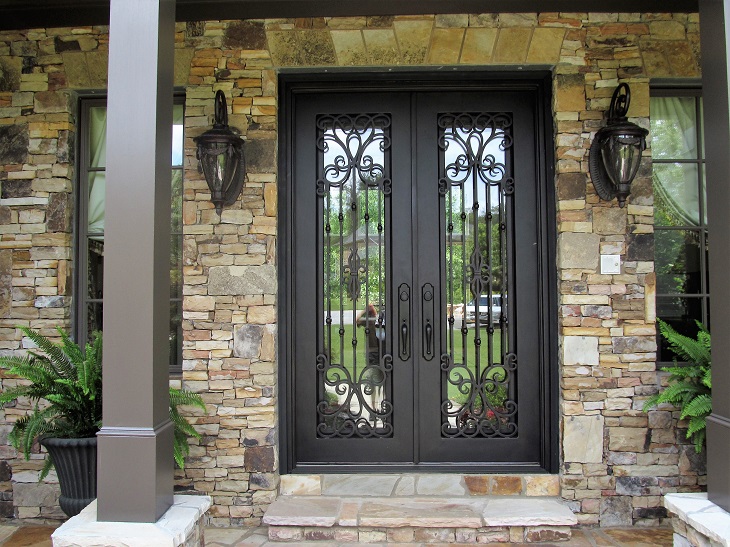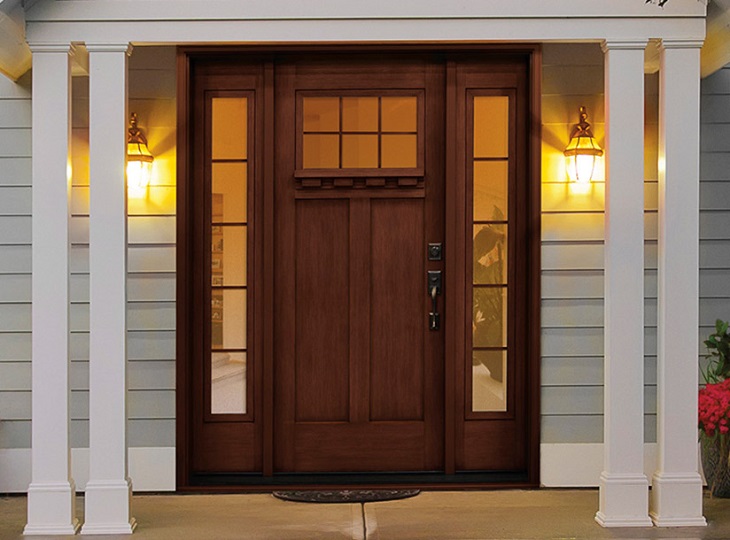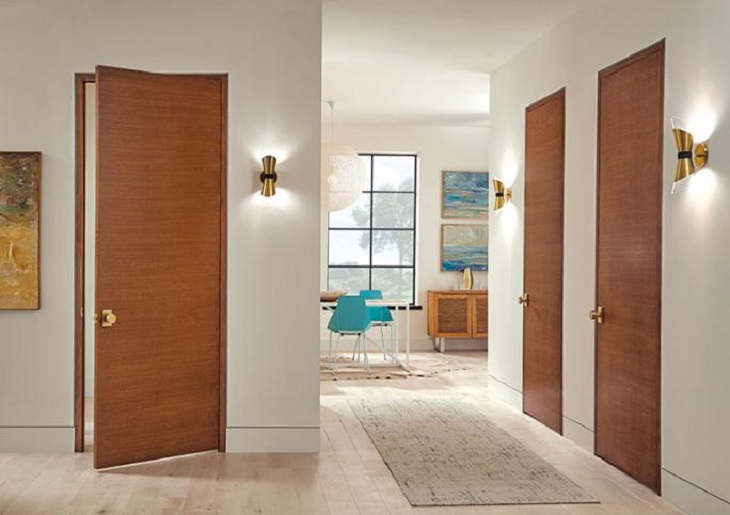Doors not only add beauty and style to your home but also create privacy, define rooms and reduce noise. And the many different designs and styles available means you can find the perfect match to compliment your home’s decor – whether it is a Scandinavian or shabby chic interior design.
To build a door able to withstand the outdoor element and everyday use, special materials and techniques are used. The way the door is made can also affect how well it works and how long it will take before you have to buy a replacement. Read more to learn about the difference between interior and front doors and how you know which choice is right for you.
Front Doors

As you may know, wood tends to warp and to expand and contract with the weather, the reason why a door cannot be made from a single slab of wood. Improvements in technology have led to a process of making doors that involves interlocking pieces. Some front doors include rails, stiles and panels while others have a frame and fill-in pieces covered by a solid piece of veneer. Because some materials perform better than others, you need to check a door’s construction to ensure it will meet your requirements.
Solid-Core Flush Front Doors
This type of door is made pretty much the same as a hollow-core interior door, but the space within the wood frames is filled with solid particleboard. Although these doors are very heavy, they’re not as durable as other exterior doors. Not keeping it protected with paint can lead the veneer to delaminate from the particleboard. The door can become unusable if the particleboard gets wet.
Fibreglass Front Doors
With the ability to be moulded into almost any shape and style, fibreglass exterior doors have recently become quite popular. Furthermore, fibreglass is hard, durable and resistant against shrinking, expanding or warping. These doors are not only available in a variety of colours, but they are also very easy to paint.
Wood-Panel Doors

Featuring a classic appeal, this type of door can be used for both interior and exterior applications. Solid wood is known for its good strength and insulating properties, but not all wood is the same. For example, oak is a hardwood very resistant to denting while pine is a softwood that while quite durable can be more easily dented. For a stain-grade door, which is made of full-length attractive pieces of wood, you’ll need a bigger budget. Some front doors come with a foam core for added stability and insulation. Remember that all wood-panel doors must be protected with paint or finish to prevent them from warping or cracking.
Stave-Core Front Doors
Also called core-block, these doors look like a standard wood-panel door but are made of several thin pieces of wood laminated together in a core that is then covered with a wood veneer. This process results in an extremely stable door. Still, the wood veneer is liable to peel if the door is not kept protected with paint or stain.
Steel Front Doors
Once used only for commercial applications, steel front doors are very popular for homes nowadays. Steel doors for home use can come with a steel face and a foam core for insulation as well as have a core made of foam wrapped in steel, with a wood veneer applied to the exterior. These features make this door a very strong and burglar resistant option with good insulating properties.
Interior Doors
Because interior doors aren’t exposed to the weather, they are made of less solid materials than exterior doors. For this reason, an interior door should never be used as a house entry door. No matter how well you protect the door with paint or stain, will warp and come apart over time.
Hollow-Core Flush Interior Doors

Commonly used in new constructions, this type of door has a frame made of solid wood boards that are typically about 3.8 cm wide. On the interior of the door, a cardboard webbing is used to provide rigidity and prevent drumming. If treated gently, these doors can last for decades. However, it can be dented or punctured if hit hard.
Stamped Hardboard Interior Doors
Made from a hardboard that is a fairly soft material usually covered with hard-baked paint, a stamped hardboard door is one of the most affordable choices you can find. One of the greatest qualities about this door is that the hardboard can be moulded into a convincing approximation of natural wood grain. If treated gently these doors can also look great for years. But they can also be easily dented and if they become wet for prolonged periods, the hardboard will swell. Both cases are hard to repair.
Medium-Density Fiberboard (MDF)
Featuring a panelled yet modern look and available in a wide range of attractive styles, interior doors made of MDF are becoming quite popular. Although not as strong as solid wood, MDF is harder and less susceptible to denting than hardboard.
What Other Choices Do You Have?
In addition to the above, you’ll also find glass doors. Are glass front doors safe, you may ask? To be able to be used as an exterior door, a glass-panelled door needs to be well built. You also need to make sure to get gas-filled thermal glass panes to ensure the glass is well sealed against the stiles and rails. A glass door with these features will be a great front door choice.


















